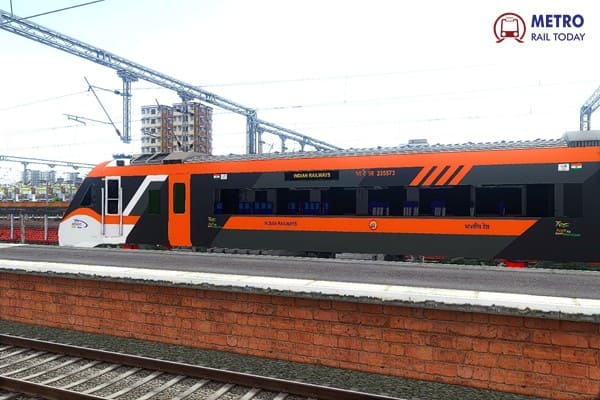 India Unveils First Vande Metro Train - Know All About
India Unveils First Vande Metro Train - Know All About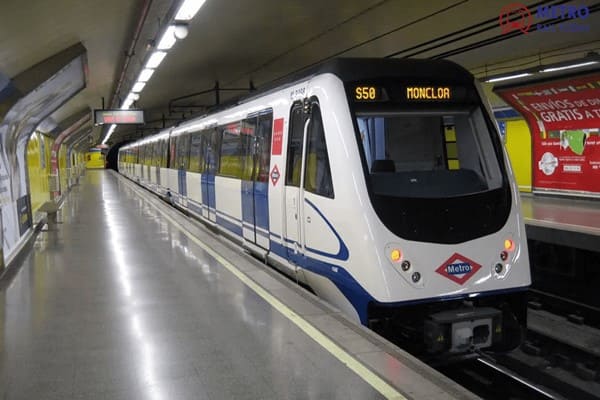 CAF awarded €450 million order to supply 40 new six-car trains to Madrid Metro
CAF awarded €450 million order to supply 40 new six-car trains to Madrid Metro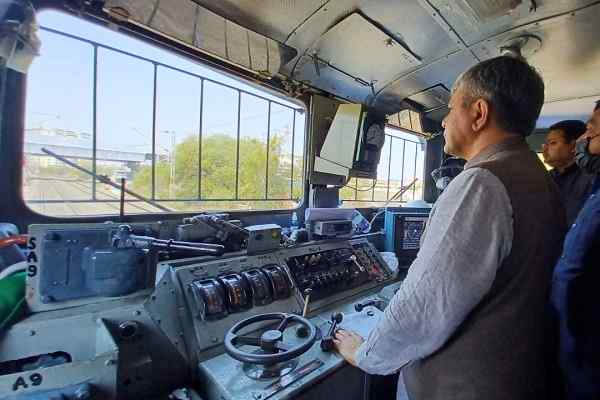 RailTel signs MoU with Quadrant to advance KAVACH implementation in Indian Railways
RailTel signs MoU with Quadrant to advance KAVACH implementation in Indian Railways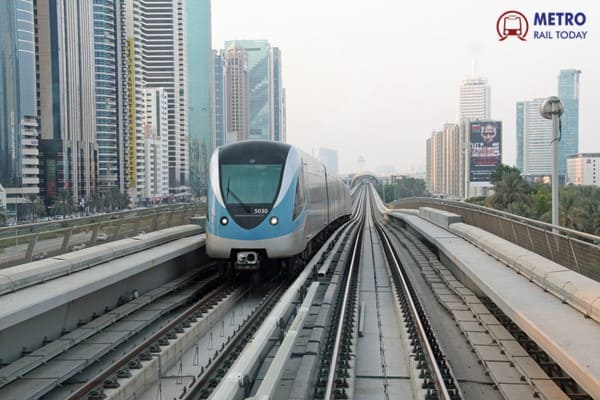 BHEL join hands with HIMA Middle East for strengthening Railway Signalling Business
BHEL join hands with HIMA Middle East for strengthening Railway Signalling Business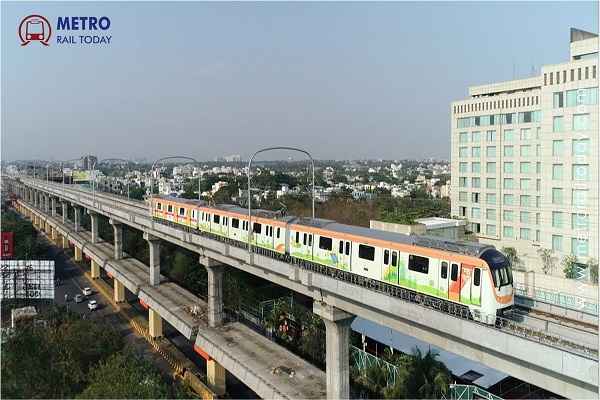 Maha Metro to appoint consultant for carbon credits for Nagpur and Pune Metro Projects
Maha Metro to appoint consultant for carbon credits for Nagpur and Pune Metro Projects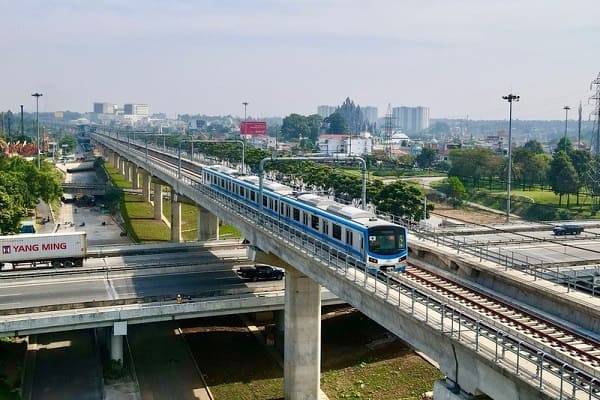 Kerala likely to approve ₹11,560.8 crore Trivandrum Metro Rail Project next month
Kerala likely to approve ₹11,560.8 crore Trivandrum Metro Rail Project next month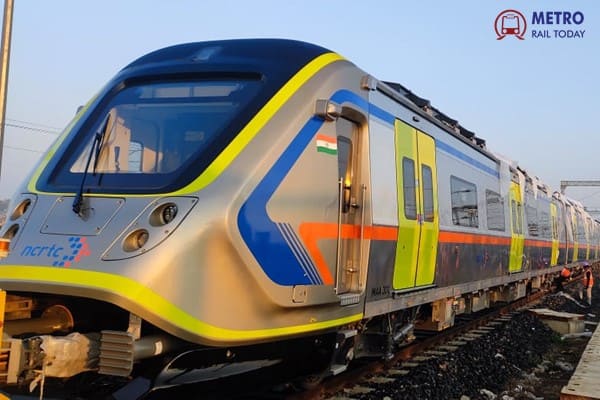 How will Meerut Metro's Partapur station be unique with two platforms and four tracks?
How will Meerut Metro's Partapur station be unique with two platforms and four tracks?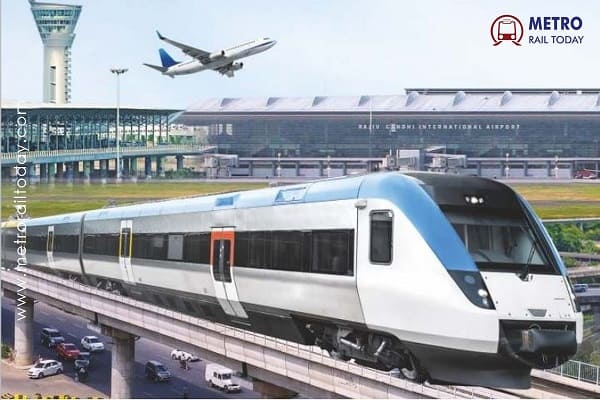 Survey conducted on Hyderabad Airport Metro Corridor to finalize alignment
Survey conducted on Hyderabad Airport Metro Corridor to finalize alignment Kolkata Metro conducts trial runs on Orange Line from Ruby Crossing to Beleghata
Kolkata Metro conducts trial runs on Orange Line from Ruby Crossing to Beleghata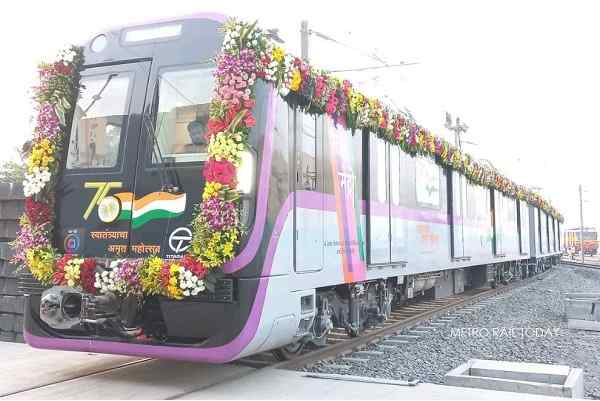 Empowering India's Metro Rail Projects: The Rise of I-METRO Society
Empowering India's Metro Rail Projects: The Rise of I-METRO Society
Navigating India's Metro Rail Expansion: Efficient Planning for Timely Completion
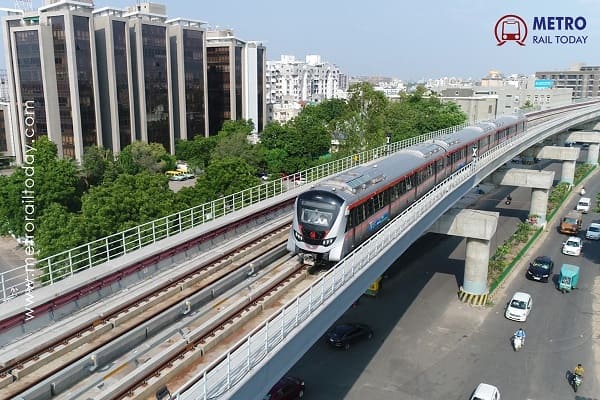
Imagine hurtling through your city, not battling gridlock, but gliding effortlessly above it. This isn't science fiction – it's the ambitious vision for India's urban future. A 1000-kilometer metro rail network is planned across nine major cities by 2030, revolutionizing how millions navigate their daily lives. But with such a monumental undertaking, a crucial question arises: how does the nation ensure this futuristic cityscape becomes reality on time and within budget?
The hurdles are not insurmountable. By adopting a strategic two-pronged approach at both the government and industry levels, the country can navigate these challenges and pave the way for a more connected, sustainable, and efficient urban India.
Future Life In A Metro
In 2014, only 248 km of metro rail was operational in India. Almost a decade on, in 2023, that number stood at 895 km across 20 different cities today. India’s metro rail network is already the third biggest in the world behind China and the United States. If India were to realise its dream of a 100 km metro network, it would surpass the US.
This massive undertaking is about creating a brighter urban future. The network will significantly improve connectivity in bustling economic hubs of the country, allowing residents to reach their destinations faster and with less hassle. The plan recognizes the "Make in India" initiative as a powerful engine for growth, aiming for a remarkable 75% of the rolling stock (trains) to be manufactured domestically. This isn't just about self-reliance; it's about creating local jobs, fostering technological expertise, and bolstering India's position as a global manufacturing powerhouse.
The plan also acknowledges the diverse needs of different cities. For tier-2 cities with growing populations but perhaps less intense traffic demands, the government is planning to introduce Metro Lite. Here, the focus is on cost-effectiveness for the project, with construction costs targeted at a range of INR 120-140 crores per kilometer.
For even smaller cities, the project transforms into Metro Neo – a solution designed with even greater financial prudence in mind. Targeting construction costs as low as INR 70-80 crores per kilometer, Metro Neo caters to cities with lower passenger volumes, ensuring a sustainable and cost-effective approach to urban transportation.
In all of this, the government hasn’t lost sight of sustainability. By 2026-27, a staggering 600 MW of solar power capacity is envisioned to be integrated across the metro network. This commitment to clean energy demonstrates India's leadership in building a greener future.
How to Keep Things On Track
While the vision is laudable, achieving it on schedule and within budget requires a clear roadmap. The time-value of money principle plays a crucial role in infrastructure projects. A standard rule in engineering economics states that the years to double the present value = 72/rate of interest. It means that at a 10% interest rate, the credit cost burden for an infrastructure project developer doubles in just 7.2 years (72/rate of interest = years to double the present value). This underscores the importance of minimizing project delays to avoid spiraling costs.
A two-pronged approach can help achieve on-time and on-budget project completion.
Government-Level Interventions
- Pre-emptive Budgeting for Raw Materials: Cost-push inflation due to the scarcity of raw materials like steel and cement can significantly impact project timelines and budgets. The government can address this by ensuring budgetary outlays for construction raw materials and relevant manufacturing sectors like railway coach and electric locomotive production precede and outpace metro project outlays.
- Fast-Track Approvals for Raw Material Manufacturing: Expediting clearances and approvals for dedicated raw material manufacturing projects is crucial. This will ensure the timely availability of materials at competitive prices, allowing the cost benefits to be passed down the supply chain to infrastructure project developers.
Industry-Level Collaboration
- Cloud-Based Project Management: Real-time project monitoring and progress review are essential. Implementing a cloud-based SaaS platform can ensure transparency and collaboration. Suppliers, project owners, government agencies, and creditors can all access the platform for streamlined communication and monitoring of rolling stock manufacturing schedules across all suppliers.
- Supply Chain Resilience: Building a robust supply chain is paramount. Identifying and nurturing a network of suppliers and fabricators allows for seamless substitution in case of disruptions. Providing such entities with easy access to working capital fosters agility and resilience within the supply chain.
- Consolidation for Streamlined Procurement: Consolidating suppliers and fabricators enables faster procurement and payment cycles. Having a single point of contact for infrastructure subcontractors regarding production milestones and payments can significantly improve efficiency within the supply chain.
- Quality Control and Milestone-Linked Payments: Regular audits of supplier facilities by project owners ensure adherence to quality standards. Linking milestone completion in the manufacturing schedules of both Tier-1 and Tier-2 suppliers to payment releases incentivizes timely delivery. Similarly, linking project owner payments to infrastructure developers upon reaching specific procurement milestones further incentivizes efficient project execution.
Conclusion
India's metro dream hinges on a key principle: supplier industries, like raw material providers and fabricators, must expand faster than the metro projects themselves. This creates a crucial buffer. It is like a race – suppliers need a head start to avoid bottlenecks and cost hikes. By proactively growing their production capacity, these industries can meet rising demand from metro projects without inflating prices. In essence, a robust and growing manufacturing ecosystem is the foundation for India's metro vision. With this strategic approach, India can build a future where cutting-edge urban mobility thrives alongside a flourishing domestic manufacturing sector.




